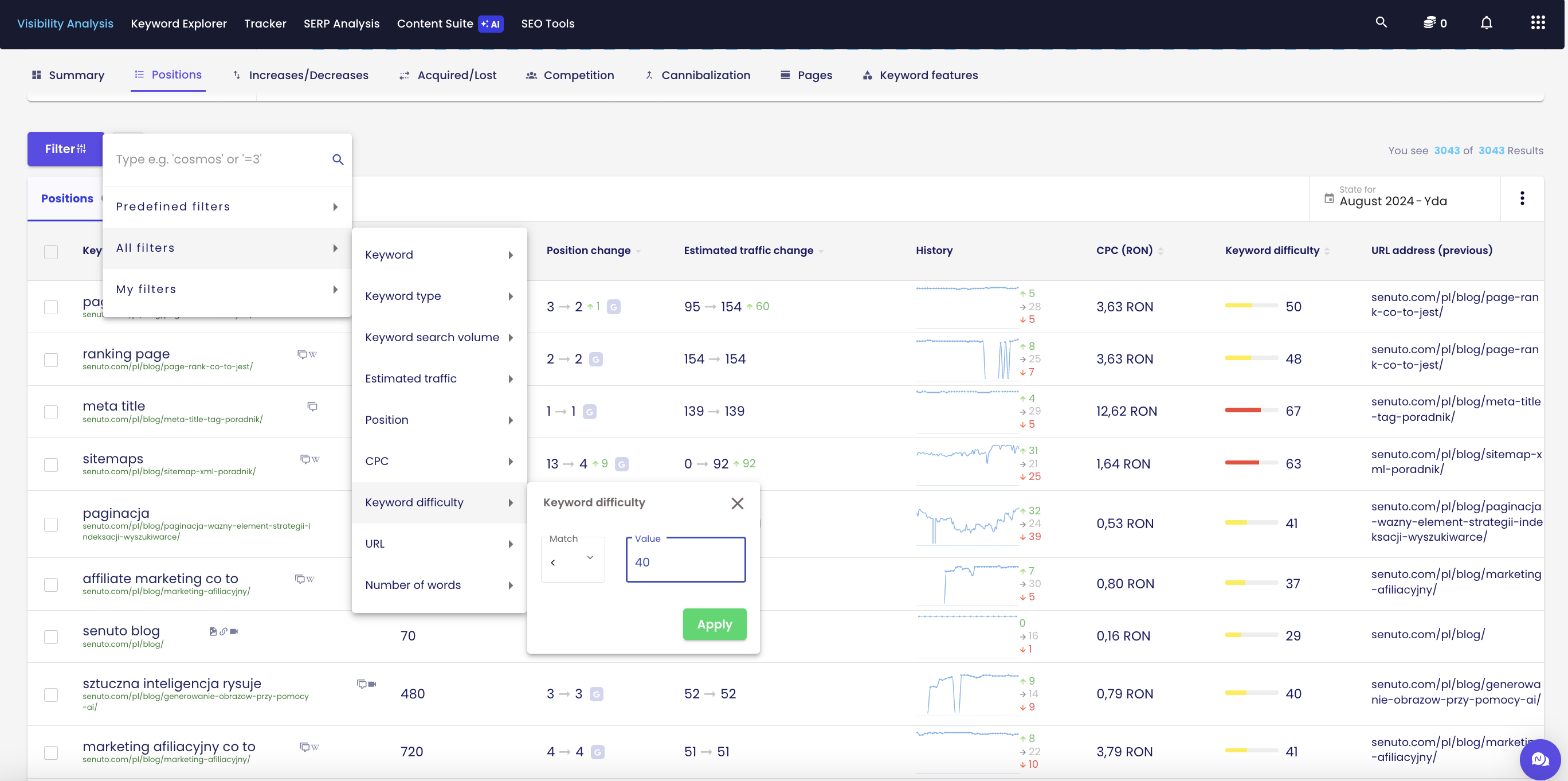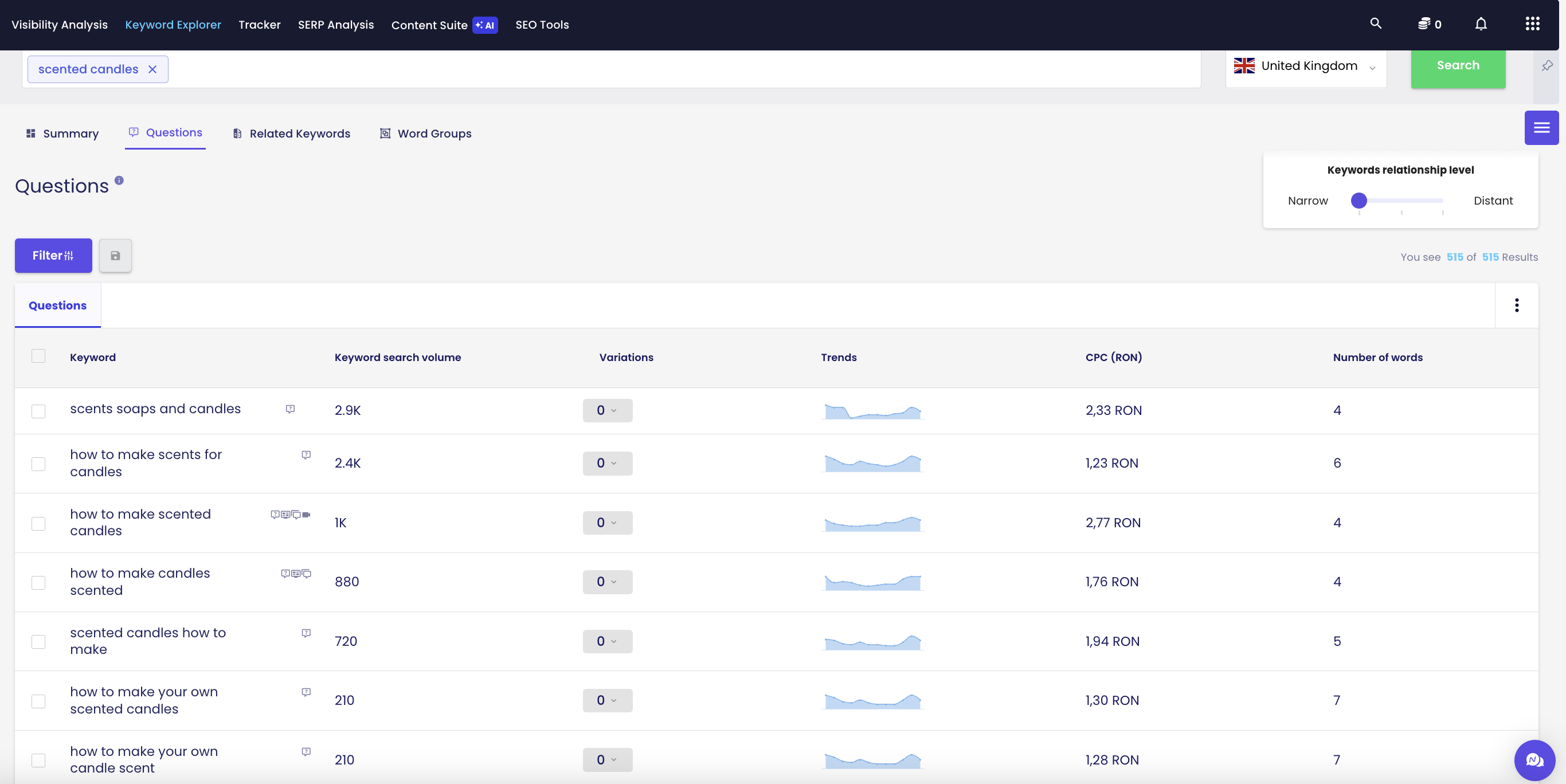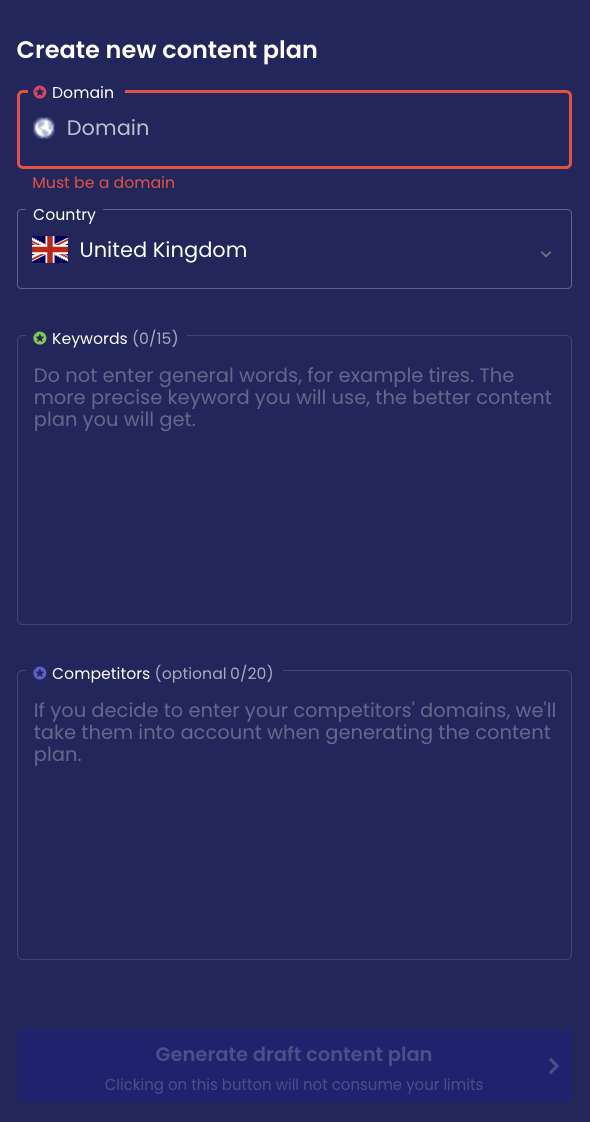Low competition keywords are an essential aspect of any successful SEO strategy. These keywords, which have lower search volume and competition, can help you rank higher in search engine results and drive more organic traffic to your website. In this comprehensive guide, we will explore the concept of low competition keywords, how to identify them, and strategies to find and target them effectively.
Key Takeaways
- Low competition keywords are search terms with fewer competing websites and moderate to low search volume, making them easier to rank for in search engine results.
- Identifying low competition keywords involves analyzing keyword difficulty scores, search intent, and monthly search volume to ensure relevance and value to the target audience.
- Strategies for finding low competition keywords include using keyword planner tools, analyzing Google search suggestions, and focusing on long-tail and semantically related keywords.
- Implementing low competition keywords in your SEO strategy can drive more targeted organic traffic, improve website visibility, and increase conversions by incorporating them into high-quality content and optimizing on-page SEO elements.
Understanding the concept of low competition keywords
When understanding keywords, it’s essential to know that they are the words or phrases that users type into search engines to find information. In the context of SEO, keywords are crucial as they help search engines understand the content of a webpage and rank it accordingly. One important aspect of keywords is the level of competition associated with them. This brings us to the concept of ‘low competition’ keywords.
Low competition keywords are those that have a lower search volume and fewer websites competing for the top positions in search engine results pages (SERPs). These keywords are often easier to rank for, as there is less competition from other websites. This makes them an attractive option for website owners and marketers looking to improve their SEO strategy.
What are low competition keywords and why are they important?
Low competition keywords are search terms with a relatively low number of competing websites and a moderate to low search volume. These keywords are important because they offer a higher probability of ranking well in search engine results, which can lead to increased organic traffic and conversions. Why low-competition keywords are important lies in their ability to provide a more targeted audience, as users searching for these specific terms are more likely to be interested in the content or products offered by your website.
Targeting low competition keywords can also help you build authority in your niche, as ranking well for these terms can demonstrate your expertise and knowledge in the subject matter. This can lead to increased trust from users and search engines alike, further improving your website’s overall SEO performance.

The difference between high-competition and low-competition keywords
When comparing high-competition keywords and low-competition keywords, the primary difference lies in the level of competition and search volume associated with each type. High-competition keywords are those with a high search volume and a large number of websites competing for the top positions in SERPs. These keywords are often more difficult to rank for, as there is a greater level of competition from other websites.
On the other hand, low-competition keywords have a lower search volume and fewer competing websites. This makes them easier to rank for, as there is less competition for the top positions in SERPs. The pros of targeting low-competition keywords include a higher likelihood of ranking well, a more targeted audience, and the potential to build authority in your niche. However, the cons may include a lower overall search volume and the need for a more extensive keyword research process to identify these valuable terms.
In summary, understanding the concept of low competition keywords and their importance in SEO can help you create a more effective strategy for driving organic traffic and conversions. By targeting these keywords, you can improve your website’s visibility in search engine results and build authority in your niche, ultimately leading to better overall SEO performance.
How to identify low competition keywords
Learning how to find and identify low-competition keywords is crucial for improving your website’s SEO performance. In this section, we will provide a step-by-step guide on how to find low competition keywords and discuss the factors to consider when identifying them.
Using keyword difficulty score to estimate keyword competition
The keyword difficulty score is a metric used to estimate the level of competition for a specific keyword. It is usually represented on a scale from 0 to 100, with higher scores indicating higher competition. To estimate keyword competition, you can use various SEO tools that provide keyword difficulty scores, such as Senuto. This tool analyze factors like the number of competing websites, domain authority to calculate the keyword difficulty score.
When identifying low competition keywords, look for those with a lower keyword difficulty score. However, it’s essential to consider other factors, such as search intent and monthly search volume, to ensure that the chosen keywords are relevant and valuable for your target audience.
Understanding search intent and monthly search volume in keyword analysis
Understanding search intent is crucial in keyword analysis as it helps you identify keywords that align with your target audience’s needs and expectations. Search intent refers to the reason behind a user’s search query, which can be informational, navigational, transactional, or commercial investigation. By targeting keywords that match your audience’s search intent, you can improve the relevance of your content and increase the likelihood of ranking well in SERPs.
Monthly search volume is another essential factor to consider in keyword analysis. It refers to the average number of times a specific keyword is searched for within a given month. While low competition keywords typically have lower search volumes, it’s crucial to strike a balance between competition and search volume. Targeting keywords with too low search volume may not generate enough traffic to justify the effort, while those with high search volume may be too competitive to rank for.
How keyword planner helps in finding low competition keywords
Keyword planner tools are essential for finding low competition keywords. These tools, such as Senuto, help you discover new keyword ideas, analyze their competition, and estimate their search volume. To find low competition keywords using a keyword planner, follow these steps:
- Enter a seed keyword related to your niche or topic.
- Analyze the suggested keywords and their associated metrics, such as keyword difficulty score and monthly search volume.
- Filter the results to display keywords with lower competition and a reasonable search volume.
- Review the filtered keywords and select those that align with your target audience’s search intent and your content strategy.
By using keyword planner tools and considering factors like keyword difficulty score, search intent, and monthly search volume, you can effectively identify low competition keywords that can boost your website’s SEO performance and drive targeted organic traffic.
Strategies to find and target low competition keywords
In this section, we will explore various strategies to find and target low competition keywords effectively. By implementing these strategies, you can improve your website’s SEO performance and drive targeted organic traffic.
How to find low competition keywords using the best free tools
There are several free tools available that can help you find low competition keywords. Some popular options include Google Keyword Planner, Ubersuggest or Answer The Public.
To use these tools, follow these steps:
- Enter a seed keyword related to your niche or topic.
- Analyze the suggested keywords and their associated metrics, such as keyword difficulty score and monthly search volume.
- Filter the results to display keywords with lower competition and a reasonable search volume.
- Review the filtered keywords and select those that align with your target audience’s search intent and your content strategy.
If you want to go after low-competition keywords, you can also use Senuto. Our tool isn’t free, but it gives you much more options.
How to find keywords with less competition with Senuto?
Search keyword strategy is not a simple task. Nor is it a task that is beyond your abilities. In order to perform this task, you need to know the basics related to e.g:
- semantic keyword phrases,
- estimating competition,
- organic search traffic.
Among other things, it is in these terms that all the keyword magic begins.
In Senuto, you can locate such phrases in at least 3 different ways.
1. Analysis of competitor phrases in the Visibility Analysis
Start by analysing any major competitor in your industry. Or a few different competitors straight away (depending on how much time you have for this).
Then filter the position report by low keyword difficulty and combine this with the Keyword search volume. The higher the number of searches and the lower the difficulty, the better the phrase to use.

2. Questions and Related Keywords in the Keyword Explorer.
Once you have launched the tool, enter the main phrase you are interested in in the appropriate place. This could be, for example, scentend candles.

When you click “Search” button, you will see a whole list of general keywords with a lot of competition. You can just glance at them to then move on to two interesting reports: Questions and Related Keywords.

This is where you will find more precise keyword phrases with low competition. Many of them, e.g. “how to make your own scented candles” can provide inspiration for a blog text.
3. Content planning with Content Planner
Okay. This tool does not show you the exact difficulty of a particular word. The advantage of Content Planner, however, is that nearly 90% of the work the tool does for you.

Fill in the fields with your domain address, country and the main keyword phrases you are interested in and then generate a content plan. The tool, after an analysis that takes a few minutes, will show you which keywords your domain is not showing up for in Google. You then simply review the suggestions and decide which of these words you want to be visible for and, according to your decision, start creating relevant content.

Using Google search suggestions to spot low-competition keywords
Google search suggestions can be a valuable resource for identifying low-competition keywords. When you start typing a query in the Google search bar, the search engine provides a list of suggested keywords based on popular searches. These suggestions can help you spot low-competition keywords that may not be as apparent in keyword planner tools.
To use Google search suggestions for keyword research, follow these steps:
- Type a seed keyword related to your niche or topic in the Google search bar.
- Take note of the suggested keywords that appear as you type.
- Repeat the process with different variations of your seed keyword to generate more suggestions.
- Analyze the suggested keywords using a keyword planner tool to determine their competition and search volume.
- Select the low-competition keywords that align with your target audience’s search intent and your content strategy.
Long-tail keywords are longer, more specific keyword phrases that typically have lower competition and search volume. They often have a higher conversion rate, as users searching for long-tail keywords are more likely to be in the later stages of the buying process. Semantically related keywords are those that share a similar meaning or concept with your primary keyword.
To capitalize on long-tail and semantically related keywords, follow these steps:
- Use keyword planner tools to generate long-tail keyword suggestions based on your seed keyword.
- Identify semantically related keywords by analyzing the search results for your primary keyword and looking for common themes or topics.
- Analyze the competition and search volume of the long-tail and semantically related keywords using a keyword planner tool.
- Select the low-competition keywords that align with your target audience’s search intent and your content strategy.
By implementing these strategies to find and target low competition keywords, you can improve your website’s SEO performance, drive targeted organic traffic, and increase the likelihood of ranking well in SERPs.
Implementing low competition keywords in your SEO strategy
In this section, we will discuss how to effectively implement low competition keywords into your SEO strategy. By incorporating these keywords, you can drive more traffic and conversions to your website.
How to use low competition keywords that drive traffic and conversions
Here are some strategies for using low competition keywords to increase website traffic and boost conversions:
- Create high-quality content: Focus on producing well-researched, informative, and engaging content that incorporates your low competition keywords. This will help you rank higher in search engine results and attract more visitors to your site.
- Optimize on-page SEO: Ensure that your low competition keywords are included in essential on-page SEO elements, such as title tags, meta descriptions, headings, and image alt tags. This will improve your website’s visibility and help search engines understand the relevance of your content.
- Use long-tail keywords: Incorporate long-tail keywords, which are more specific and less competitive, into your content. These keywords often have a higher conversion rate, as users searching for them are more likely to be in the later stages of the buying process.
- Target semantically related keywords: Include semantically related keywords in your content to cover a broader range of search queries and improve your chances of ranking for multiple keywords.
- Monitor and analyze keyword performance: Regularly track the performance of your low competition keywords using analytics tools, such as Google Analytics. This will help you identify which keywords are driving traffic and conversions, and adjust your SEO strategy accordingly.
- Build high-quality backlinks: Acquire backlinks from reputable websites to improve your website’s authority and search engine rankings. This will increase the likelihood of your low competition keywords driving traffic and conversions.
By implementing low competition keywords in your SEO strategy and following these tips, you can effectively drive traffic and conversions to your website. This will ultimately lead to improved search engine rankings and increased revenue for your business.
Case studies and examples of successful low competition keyword strategies
In this section, we will explore case studies and examples of successful low competition keyword strategies. By analyzing these examples, you can gain insights into how businesses have effectively utilized low competition keywords to improve their SEO performance and drive traffic to their websites.
Examples of profitable keywords with low competition
Here are some examples of profitable keywords with low competition that have been successfully used by businesses to boost their SEO strategy:
- Eco-friendly office supplies: A small online store specializing in environmentally friendly office products targeted this low competition keyword to attract customers who prioritize sustainability. By focusing on this niche, the store was able to rank higher in search results and increase sales.
- Customized pet portraits: An artist offering personalized pet portraits found success by targeting this low competition keyword. This allowed the artist to reach a specific audience interested in unique pet-related products, resulting in increased website traffic and commissions.
- Gluten-free baking classes: A local bakery offering gluten-free baking workshops targeted this low competition keyword to attract customers with dietary restrictions. By catering to this niche market, the bakery was able to increase workshop sign-ups and boost overall revenue.
- Handmade wooden toys: A craftsman specializing in handmade wooden toys used this low competition keyword to reach parents and gift-givers looking for high-quality, unique toys. This strategy helped the craftsman increase website traffic and sales.
These examples of profitable keywords with low competition demonstrate the potential benefits of targeting niche markets and specific search queries. By focusing on low competition keywords, businesses can improve their search engine rankings, drive targeted traffic to their websites, and ultimately increase revenue.
In conclusion, case studies and examples of successful low competition keyword strategies can provide valuable insights for businesses looking to improve their SEO performance. By analyzing these examples and implementing similar strategies, you can effectively target low competition keywords and boost your website’s traffic and conversions.
Common mistakes to avoid when targeting low competition keywords
While targeting low competition keywords can be a powerful strategy for boosting your SEO performance, there are some common mistakes that you should avoid when targeting these keywords. In this section, we will discuss these mistakes and provide tips on how to avoid them.
Misunderstanding keyword difficulty and ranking difficulty
One common mistake is misunderstanding keyword difficulty and ranking difficulty. Keyword difficulty refers to the level of competition for a specific keyword, while ranking difficulty refers to how challenging it is to rank for that keyword on search engine results pages (SERPs). These two concepts are related but not interchangeable.
Many people assume that a low keyword difficulty score automatically means that it will be easy to rank for that keyword. However, ranking difficulty also depends on factors such as your website’s domain authority, the quality of your content, and the strength of your backlink profile. To avoid this mistake, it’s essential to consider both keyword difficulty and ranking difficulty when selecting low competition keywords to target.
Overlooking the importance of relevant keywords and keyword opportunities
Another common mistake is overlooking the importance of relevant keywords and keyword opportunities. While it’s crucial to target low competition keywords, it’s equally important to ensure that these keywords are relevant to your business and audience. Targeting irrelevant keywords may result in attracting low-quality traffic that doesn’t convert into leads or sales.
To avoid this mistake, focus on identifying keyword opportunities that are both low in competition and highly relevant to your target audience. This can be achieved by conducting thorough keyword research, analyzing your competitors’ keyword strategies, and understanding the search intent behind specific keywords. By targeting relevant low competition keywords, you can drive high-quality traffic to your website and improve your overall SEO performance.
Advanced techniques for finding and targeting low competition keywords
In this section, we will explore some advanced techniques for finding and targeting low competition keywords. These techniques can help you uncover hidden keyword opportunities and give you a competitive edge in your SEO strategy.
Using keyword gap analysis to discover low-difficulty keywords
Keyword gap analysis is an advanced technique that involves comparing your website’s keyword profile with those of your competitors to discover low-difficulty keywords that you may not be targeting. This method can help you identify untapped keyword opportunities and prioritize your SEO efforts more effectively.
To perform a keyword gap analysis, follow these steps:
- Identify your top competitors by searching for websites that rank well for your target keywords or operate in the same niche as your business.
- Use a keyword research tool, such as Senuto to analyze your competitors’ keyword profiles. Look for keywords that they rank for but you don’t.
- Filter the results to focus on low competition keywords with a low keyword difficulty score and a decent search volume.
- Analyze the search intent behind these keywords to ensure they are relevant to your target audience and align with your business goals.
- Create high-quality content targeting these low competition keywords and optimize your on-page SEO elements, such as title tags, meta descriptions, and header tags.
By using keyword gap analysis, you can discover low-difficulty keywords that your competitors are already ranking for, giving you the opportunity to target these keywords and improve your website’s visibility in search engine results pages (SERPs).
Summary
In this comprehensive guide, we have explored the importance of low competition keywords in boosting your SEO strategy. We have discussed the concept of low competition keywords, their differences from high-competition keywords, and how to identify them using keyword difficulty scores, search intent, and monthly search volume.
We have also covered various strategies to find and target low competition keywords, such as using free tools, Google search suggestions, and capitalizing on long-tail and semantically related keywords. Furthermore, we have delved into the implementation of low competition keywords in your SEO strategy to drive traffic and conversions.
Through case studies and examples, we have demonstrated the success of low competition keyword strategies and highlighted common mistakes to avoid, such as misunderstanding keyword difficulty and overlooking relevant keyword opportunities. Finally, we have introduced advanced techniques like keyword gap analysis to discover and target low-difficulty keywords, giving you a competitive edge in your SEO efforts.
By mastering low competition keywords and implementing them effectively in your SEO strategy, you can improve your website’s visibility in search engine results pages (SERPs) and ultimately boost your online presence and business growth.
 Iza Sykut
Iza Sykut